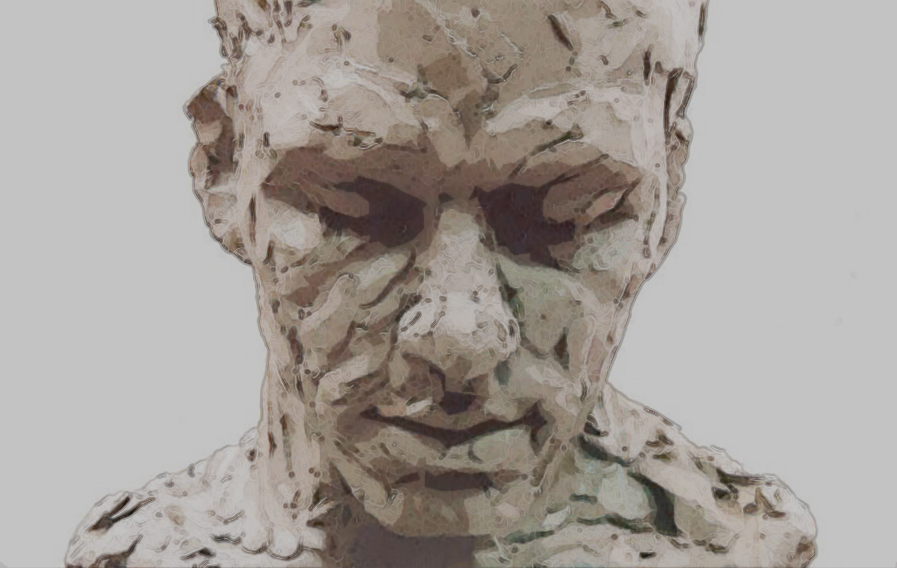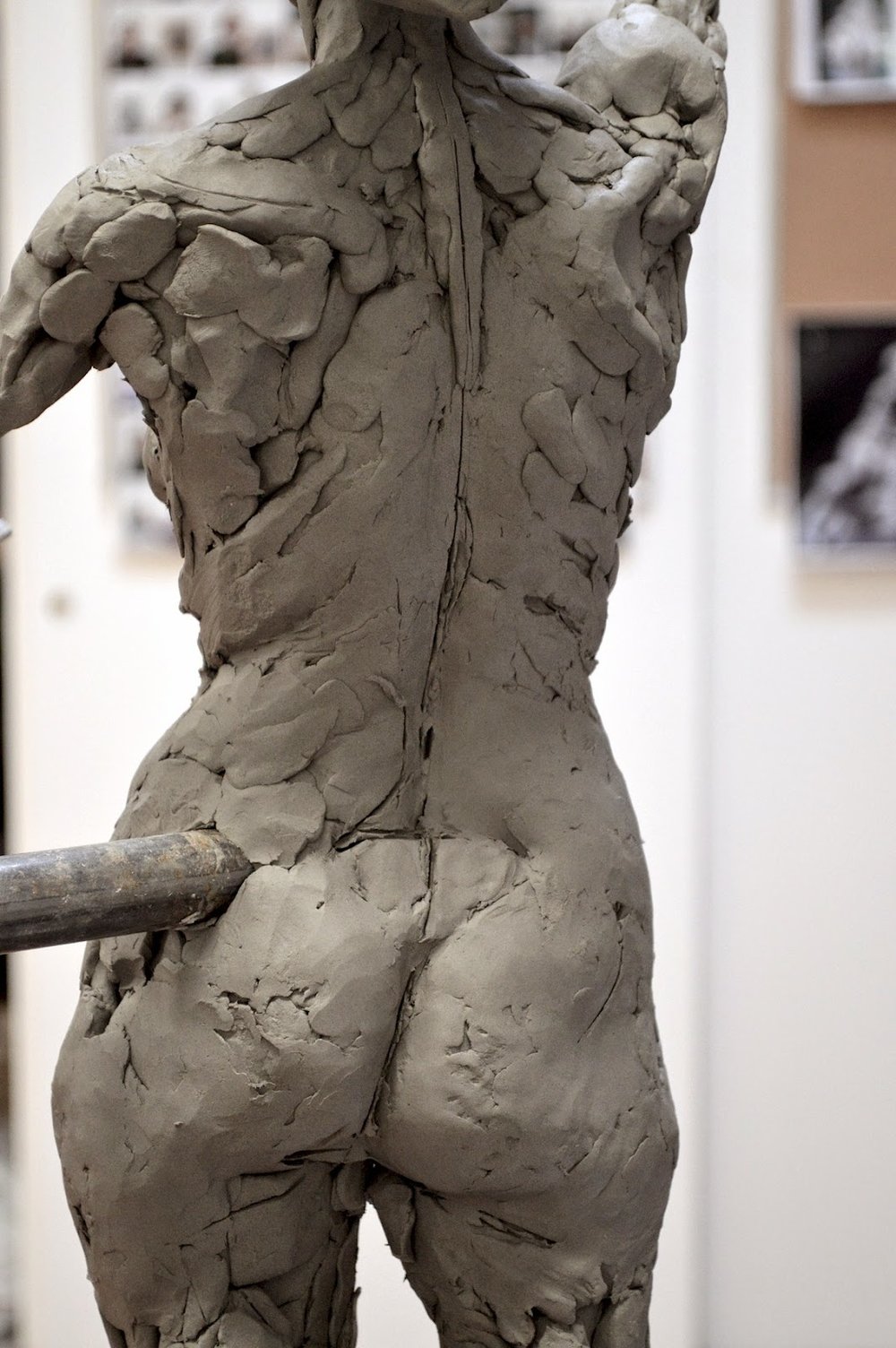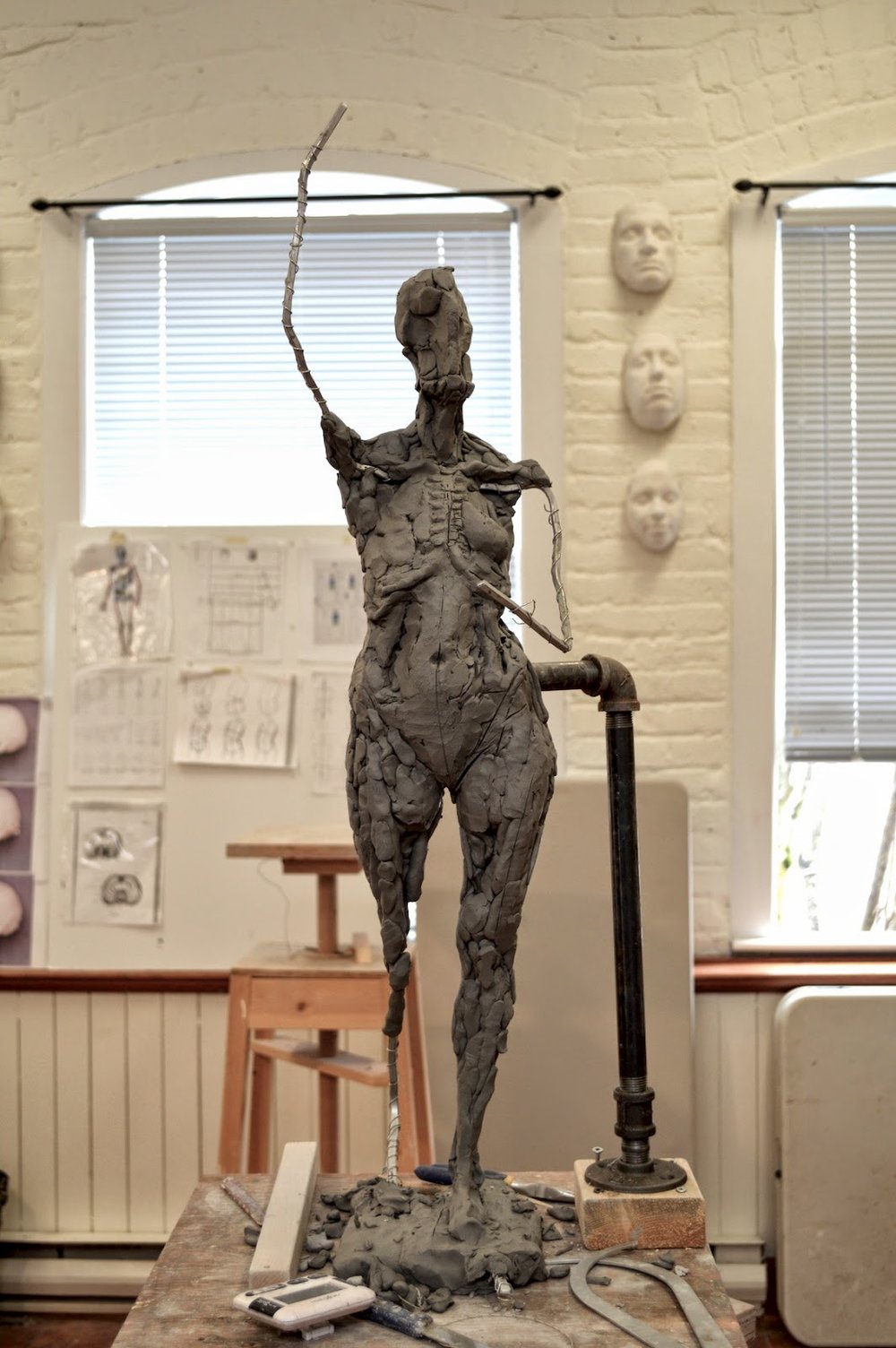And those who were born of clay from Origin were considered to be purebred. They came from the center of the progeny, at the origin of their creation, where Alos rose from the same mire and began her legacy.
The act of sculpting offspring seems tedious to many, but it is the effort, the toil, and routine that makes a Clayborn just what they are. It is a filter for those who are unworthy. Celibacy is not required for the rite, but to birth organically is rather lazy... And even these days it surprises me that doing so is still considered level with the reverence of Mahdka Kalit. That carnal pleasure takes its place right alongside a birth of true love and devotion.
As it is known, parents require three parts to bring their work to life: Firstly, a body. The child requires a physical form. Secondly, a core. The body cannot be built with only clay. Structure is required to give the form rigidity and strength. Finally, the child needs a name. These three components are absolutely necessary for the process... There are zero substitutions.
The art of Mahdka Kalit has existed since the first denizen. Alos was the first to use the craft, even though it was not coined until much later. Among those she named during the rites are her sisters, Tel Lo Re, Acedia, and others who occupied Origin until her death. She found an ultimate joy in the creation of her siblings, and considered them much closer than even family... Even though that may be difficult for others to wrap their heads around.
It should also be noted that those born from the rites of Mahdka Kalit are not strictly children of the parents, but are considered to be whichever they wish. It is also possible to conduct the rite without a spouse or partner. Such as Alos, who sculpted her siblings. However to deny a familial connection to those born of the rite is blasphemous./in]
The Art of Sculpture
Madhka Kalit takes many years to learn... Generally a typical human does not live enough to master the process of the rite. Some 80 years is a generally acceptable amount of time to study the body, but there are plenty of exceptions of course. Some can complete their learning in just three decades. Some even quicker...
The art requires an immense base of knowledge that must be acquired by experience. One cannot learn how to commit Mahdka Kalit by reading from a book, although readings cannot hurt the cause any.. To enact the rites, it is required to learn by sculpting, to gather clay and learn form. To become inspired. One may have a name even from their first work of art, if it is one that they feel compelled to call this new life. Many think of the process as a whole as the final sculpture -- where you simply create, diligently and with focus, until you have crafted your greatest piece. Until you craft what is worthy of the name and the core.
The process is revered largely because it ensures that the parent is not careless. It also imbues those who partake in the rite with an appreciation for life, and that it is not something to be squandered or thought of as insignificant.
In the final steps, during the naming ceremony and the setting of clay into stone, the parent finally sees the culmination of all their work. The child is set out into the sun for three days, and on the sunset of the third day the child comes to life... If the rite was completed properly.
The Body
For a Clayborn to live, they must have a body.
Many who have been through the rites claim that certain materials work better, bring out a better form, or simply have higher success rates... But this is false. The success of the rites are determined solely by a parent's determination, love, and time that go into the creation of the child.
For example, one cannot just partake in the rites because they want to, or for the sake of doing so. A parent must be compelled by a longing, by love. A friend may commit the ritual to birth another friend, if they wish so dearly that they weren't alone. An only child may commit Mahdka Kalit to have a sibling, a bereaved mother to have a new child. The rite relies on the fact that loneliness can inspire passion towards someone who is not yet alive...
Bodies must also resemble something that could be alive. The rite will not work if the structure is impossible or poorly made. Generally, the sculpture must be humanoid. It may have up to six arms, but requires exactly two legs, a head with all its facial features, and a torso. While quite a lot of diversity is acceptable in the rites, it is very ill received to try and bring to life an abomination of a person..
This aside... Some do have a preference for materials. And, it is true that they have different properties that make them more or less desirable for those who are learning the art. And, of course, every artist is a stickler about the materials they use.
River Clay
The most common is river clay. This is the same type of material gathered when taking material from Origin. It is very common -- and can be found in any river or stream that has silt fine enough to be used as clay. It is regarded as impure by others, but is a perfectly acceptable material for the rite. It is easy to shape, and is water based. This means it can have moisture added to it to loosen it up and reshape certain things. However, if too much is added the sculpture may be destroyed.
Refined or purified clay can be bought from supply shops around the world as well. It tends to be higher quality, but many think the trade off of being able to gather the clay isn't worth it.
Stone
Stone is a fairly unpopular medium due to how difficult it is to gather, and how difficult it is to work with. It is impossible to reshape, and cleaning up mistakes is just that much more difficult. Some people, though, work much better reductively, and prefer solid media over wet. Clay forces you to build outwards from the center, but solid media allow sculptors to sketch likenesses on a block and very gently refine. It is also very hard to break.
Marble
Marble is quite popular due to its softness and beauty. The material, even raw, is considered to be very high quality. The weight is troublesome to work with, but the reductive sculpting method paired with the softness of the material makes it rather versatile. However... It is very expensive to acquire in the quantity needed for the rite, and is difficult to replace. Not a learner's material...
It is also known by Denizens that in the ancient times of the human world, marble could be sculpted to appear like flesh, or sheer cloth, and that level of skill is something many who commit Madhka Kalit strive to achieve.
These are just a few materials that can be used in the rites. Generally the most popular, though there are exceptions obviously. Some of those being sandstone, in the west, limestone, quarry rock, quartz, or granite.
The Core
A core is another essential part of the process. Parents are required to seek out or craft what is known as the body's core, or Mhyrr. Mhyrr refers simply to an object that has dormant magical properties due to the level of empathic energy tied to it. It can be anything from a family heirloom, to something crafted by the parent. An object found on a journey that carries lots of value, or a possession of a lost friend or family member.
Furthermore, an object becomes Mhyrr once it has been implanted into the clay body of the new child.
A core has only a few requirements:
It must fit in the hand of the parent... This means that it can be grabbed by the parent, and held within the hand, and that the object does not have parts that are outside of the hand. Say, a handle does not justify an object as a core. A pocket watch can be used as a core if it means a great deal to the parent.
Most parents have a certain pride about using a beautiful core, though, even if they know it will never be seen again after the naming ceremony. Hand crafted cores are quite common -- a parent using a material of choice (of which there are infinite possibilities) to create an item that they feels represents the new child as a person. The core is also referred to as a heart, occasionally.
It should be noted that there are almost no material requirements for the core. Mhyrr can be an object, something crafted, even a liquid or a favorite food (although the latter is not recommended...)
The Name
In a sense, the name is the most important part of the rite. A word that the parent feels such compassion for, that they are compelled to use it for a new life. The name should be something that is personal, something that brings a warm feeling to the parent, and reminds them of the endearment they owe to this child. It should be something they consider when punishing them, raising them, teaching them, and letting them experience life as you gave it to them.
The only requirement for a name is its pathos. It must be something the parent feels is impactful, or at the very minimum, important. For more information, see Naming Ceremony
Birth (Mahdke)
When the sculpture is complete, the core has been inserted, and the body finished, the piece is to be set out in the open, where it may experience three sunrises and three sunsets, and the majority of the daylight. Wet media Mahdke are to be dried and tended to carefully in the process of three days. Dry media are to be doused in water and not to be left dry until the celebration is complete. On the third sunset, the Mahdke (sculpture) falls into a form of loose, untrained flesh, and comes to life. The core disappears and turns into the beast's new heart, and stone or clay is turned to flesh and warm blood. They are imbued with memories held by their core, or Mhyrr, and are allowed to have those for experience... One such memory is that of sucking in the first breath of air, pain prickling through lungs until the head is filled with a rush of life.
The body is overwhelmed with sensations. Dirt on the skin, the moving of the air, and the essence of life around them. The first word a Denizen learns is their name. The second is that of their parent.
Much more of the ceremony can be found in
Naming Ceremony
It should be noted that if Mahdke Kalit is failed, the core cannot be reused. It is destroyed by the statue, as well as the body.













I'd like to know more about why food is a bad choice for your childs Myrrh.